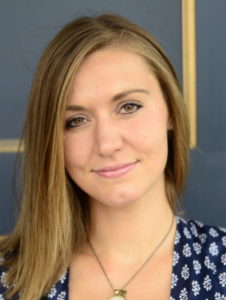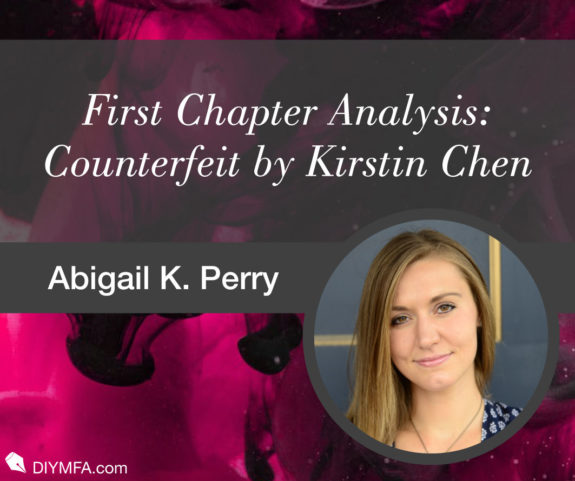If you want to write a novel that captures your readers’ attention—and your future literary agent’s interest—then you need to write a first chapter that purposefully sets up expectations for the story’s big picture and contains an interesting story event on the scene level.
Of course, a strong first chapter is only one step in entertaining your readers. To hold their attention to the end, you need to write a great book.
One of the skills that can help a writer do this is if they learn how to read like a writer. This means that the writer needs to learn how to identify when and how details in a chapter aid a story on both the macro (big picture) and micro (scene) level.
Writers who understand how to read like writers are more likely to intentionally and confidently cut out passages that don’t move their story forward or develop characters (or other important story elements, like setting) during their revision, and possibly even writing, process. Their scenes and chapters are more likely to shape the best version of themselves in earlier drafts.
If you’ve been following along with my series of articles on DIY MFA that use a scene analysis template to analyze the strength of a scene’s structure, you’ll understand what to expect in the rest of this article. If you’re unfamiliar with these previous articles, don’t fret! I’ll explain the tools and questions you can use to analyze the durability of a scene’s structure in this article.
Scene Analysis Template: How to Assess Structure in a Scene and Chapter
Before we get into today’s article, I’d like to note that I find great value in analyzing a scene’s structure in order to determine if key elements exist in a scene. This helps me determine if I think a scene “works,” or, as I like to say, if a scene advances a plot and develops a character.
I adapted the scene analysis I use from Story Grid, an editing methodology that I am trained in; the main focus of the scene analysis template determines if there is a clear character goal/want in the scene, a value shift that impacts the big picture (or main value shift in the story), and five commandments that challenge a character and force them to make a decision that shifts that scene’s value (more on these in a bit).
Keep in mind, while plot and structure are undeniably important in a scene’s workability, writers must master other essential story factors to make it entertaining and relatable. Characters, for example, are, in my opinion, the heart of a story.
That being said, I’ve found that if a writer can understand how structure works on the scene level, they can fix some major issues that create scenes where nothing significant happens—and this is a valuable writing and editing skill to learn if you are in a place of feeling like something is off in your scenes, but you’re unable to pinpoint exactly what the issue is.
Case Study: Counterfeit by Kirstin Chen
For today’s article, I’d like to look at a bestselling upmarket crime novel and Reese Witherspoon book club pick—Counterfeit by Kirstin Chen. When reading it, I was immediately hooked by its clever first chapter which uses point of view. A stranger comes to town encounter, and a reader’s growing skepticism to turn the page.
I had the pleasure of interviewing Kirstin Chen and her editor, Jessica Williams (Harper Collins), for a deep dive analysis episode on my podcast Lit Match (listen to the full episode here). In it, you can hear insightful perspectives on how this first chapter sets up expectations for the big picture.
We then also did a deep dive analysis on the first chapter’s scene structure, which I’m going to share with you here.
Let’s get into it!
Scene Analysis Template: Counterfeit, First Chapter
*NOTE: As previously mentioned, I adapted this scene analysis template from Story Grid’s writing toolbox. The four Socratic questions (I’ve reworded them but they are the foundational ideas) and the five commandments are what Story Grid uses in their masterwork guide analysis books.*
Chapter One:
“The first thing I noticed were the eyes… which is more than can be said for those Hollywood brats.”
Summary:
Ava Wong meets up with her old college roommate, Winnie Fang, who called Ava after twenty years of silence. Over coffee, Ava learns that Winnie has a friend who needs a transplant and Winnie hopes Ava can get her husband to help. Ava is annoyed until her son, Henri, throws a tantrum, and Winnie calms him down by singing to him in Chinese. Winnie then gives Henri an expensive keychain from her designer handbag. Ava is horrified when she realizes that Winnie gave Henri a Fendi keychain, and later Ana tries to purchase one as a replacement—she quickly forsakes this intent after she finds it for $600. Ava spends the evening reminiscing about why Winnie left Stanford and how Ava, like her friends, thought Winnie was guilty of cheating. And all of this is discussed between Ava and a detective.
4 Socratic Questions that Analyze a Change in a Scene:
1. What is the literal change in the scene? How does this advance the plot in some way?
Ava and Winnie become friends again after coffee; Ava even invites Winnie to her home after Winnie calms down Henri.
Literal Change: Friends who had a fall out to Friends starting up a relationship again
2. What does the main character want in this scene? Why do they want this?
At first, Ava meets Winnie because she’s curious. She wants to know why Winnie contacted her after twenty years of silence. During the meeting (and after Winnie asks Ava if she’ll connect her friend with Ava’s husband), Henri arrives. At this point, Ava wants to quiet Henri.
On a global perspective, Ava wants to convince the detective that she’s innocent.
Character Change: Curious to Exasperated to Relieved
3. How does the change in the scene impact the value shift in the central plot (big picture)?
This is the initial (stranger comes to town) meeting between Ava and Winnie. From here, Ava will bond with Winnie and find relief in Winnie’s ability to calm down her son. Without this initial meeting, Ava and Winnie would not rejuvenate their friendship and eventually join together in order to run a counterfeit handbag business.
Central Plot Value Change: Innocent to Tempted
4. How does the main conflict in the scene create a story event? Describe this story event in one sentence.
*Note: a story event exists when a protagonist’s wants/goal directly conflict’s with an antagonist’s wants/goal.*
Ava shares her initial meeting with Winnie after twenty years of silence, and how Winnie started to grow close again after Winnie helped calm down Ava’s son, Henri. All of this, along with some of Winnie’s darker past, is recounted by Ava to a detective.
5 Commandments in Scene Structure:
1. Inciting Incident (Causal or Coincidental):
Causal. Henri has a meltdown. Another idea is that this scene starts in medias res, and the inciting incident is when Winnie calls Ava to request a meeting.
2. Turning Point (Action or Revelation):
Action. Winnie sings to Henri in Chinese and hands him a Fendi keychain, which calms him down.
3. Crisis Decision (Best Bad Choice or Irreconcilable Goods):
Best Bad Choice: Does Ava invite Winnie back to her house even though she’s skeptical of Winnie’s intentions, or does Ava say goodbye to Winnie even though she’s one of the only people who has been able to calm Henri down?
4. Climax:
Ava invites Winnie back to her house.
5. Resolution:
Ava and Winnie start up their friendship again. Ava realizes how expensive Winnie’s keychain is and tries to find a replacement for it. Ava gives up on this mission when she finds it for $600. All this is explained to the detective that Ava is talking to in the scene.
How Did You Analyze this First Chapter?
If you want to write a great first chapter, you need to know how to analyze how the details both set up expectations for the big picture and develop a well-structured scene.
We focused on scene structure today, and how I thought the five commandments and story event worked in the first chapter of Counterfeit.
The beauty of my analysis, however, is that it’s just one perspective. You might see the scene structure differently, and that’s okay! The goal for learning how to read like a writer with this scene analysis template isn’t to come up with replicated answers. Instead, we can use it to come up with an agreeable conclusion about how the story moves forward, and why there is a change in value and character because of a story event.
When you start to master these tools used to analyze scenes, you’ll probably gain confidence on how to write and revise scenes. It also is a fun way to learn how to read like a writer, which inevitably will make you a better writer of your own stories. Cue your happy dance!
What did you like about the first chapter of Counterfeit? I’d love to hear your thoughts in the comments.
P.S. If you enjoyed this article and would like to learn more about how to analyze the big picture and scenes in a first chapter, I have some good news for you!
My editor and book coach companion, Savannah Gilbo, and I started a virtual book club to discuss the big and small picture of publishing’s most popular books with burgeoning writers. Come join us for our first discussion (and others to follow!). Learn more here.

Abigail K. Perry is the host of the podcast Lit Match and a certified developmental editor who specializes in Upmarket/Commercial fiction, Women’s Fiction, Historical Fiction, MG/YA fiction, and YA fantasy. Abigail holds a B.S. in TV, Radio, and Film from Syracuse University and a Masters in Secondary Education from Endicott College. Abigail worked as an editorial intern and the Agency Relations Assistant for P.S. Literary Agency, is fluent in book and movie quotes, and loves a long walk with good company, which includes audiobooks and two- and four-legged loved ones and buddies. Visit Abigail’s website at www.abigailkperry.com. You can also follow her on Twitter or Instagram and subscribe to her podcast.







